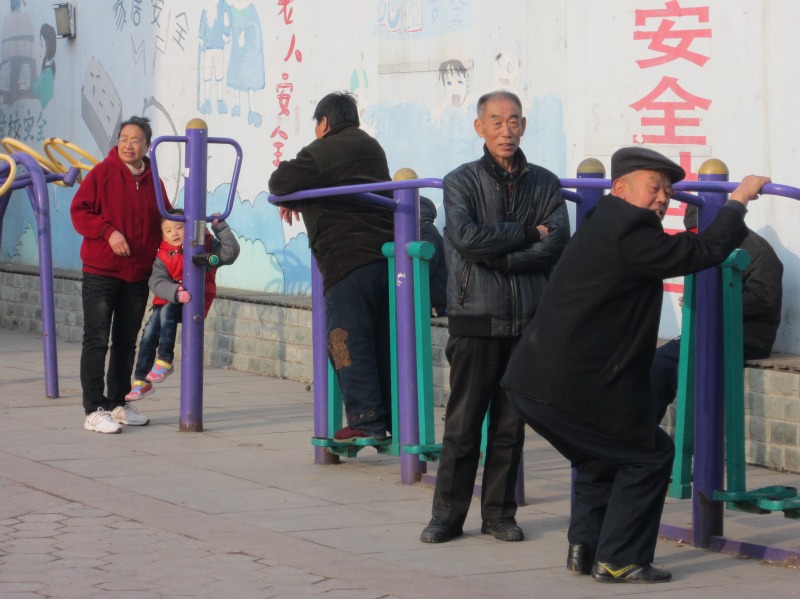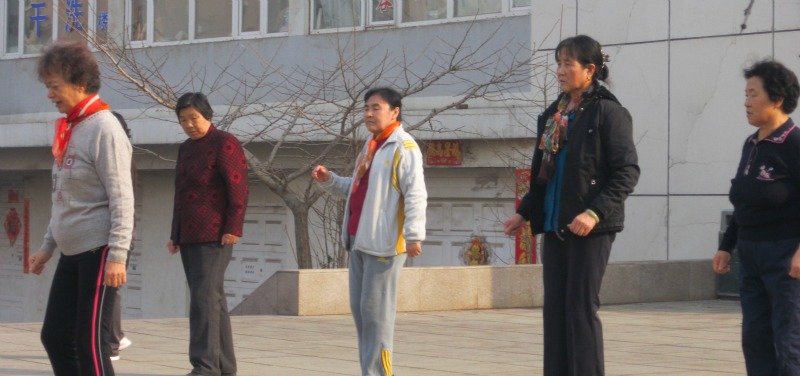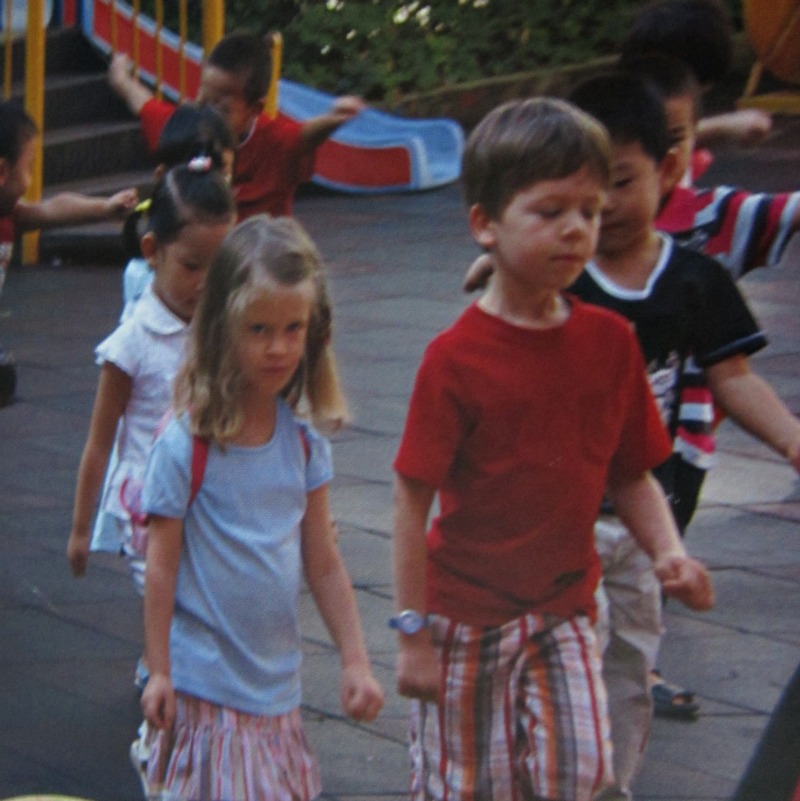 Exercise is part of the culture here–from school children who line up every morning to march and do junior calisthenics, to the elderly who take a morning walk and/or one after dinner. In addition, until quite recently, the primary mode of transportation for everyone in China was by foot or bicycle (although in our city, bicycles are scarcer because it is quite hilly), so walking was a part of daily life in China. Elevators used to be reserved for buildings over five floors, and small “exercise parks” like the one pictured below are common–every park and apartment complex has at least one.
Exercise is part of the culture here–from school children who line up every morning to march and do junior calisthenics, to the elderly who take a morning walk and/or one after dinner. In addition, until quite recently, the primary mode of transportation for everyone in China was by foot or bicycle (although in our city, bicycles are scarcer because it is quite hilly), so walking was a part of daily life in China. Elevators used to be reserved for buildings over five floors, and small “exercise parks” like the one pictured below are common–every park and apartment complex has at least one.


Groups of ladies like the ones pictured above meet every day to do aerobics together. Someone brings a radio or CD player and with a leader–usually an older lady who used to teach some kind of dance classes–they all dance together. When we lived in the south, a group of ladies met in our complex every night to dance holding beautiful red fans. From time to time, I’ve been tempted to join them, but have been held back by the certainty that my participation would not go unnoticed and a large crowd would gather.

There is a proverb in Chinese that says, 饭后百步走活到九十九. “Walk 100 steps after dinner and you’ll live to be 99,” so it’s a way of thinking deeply engrained in the culture.
The car, however, is changing all this. Certainly, there are still people who exercise regularly, but the most visible group exercising are the elderly. Perhaps it is simply that they have more leisure time to do so, but I do believe this is a part of Chinese culture that is slowly disappearing.
This article shows just how much car ownership is pervading the new China as a status symbol, and changing this aspect of Chinese culture. We are sad to see it go.
So what are you doing after dinner this evening?
{Tomorrow I’ll be participating in 5 Days of Teaching Creatively along with other members of the Schoolhouse Review Crew. Don’t forget to enter the giveaway
for almost $1000 worth of homeschool and family-friendly products.}




